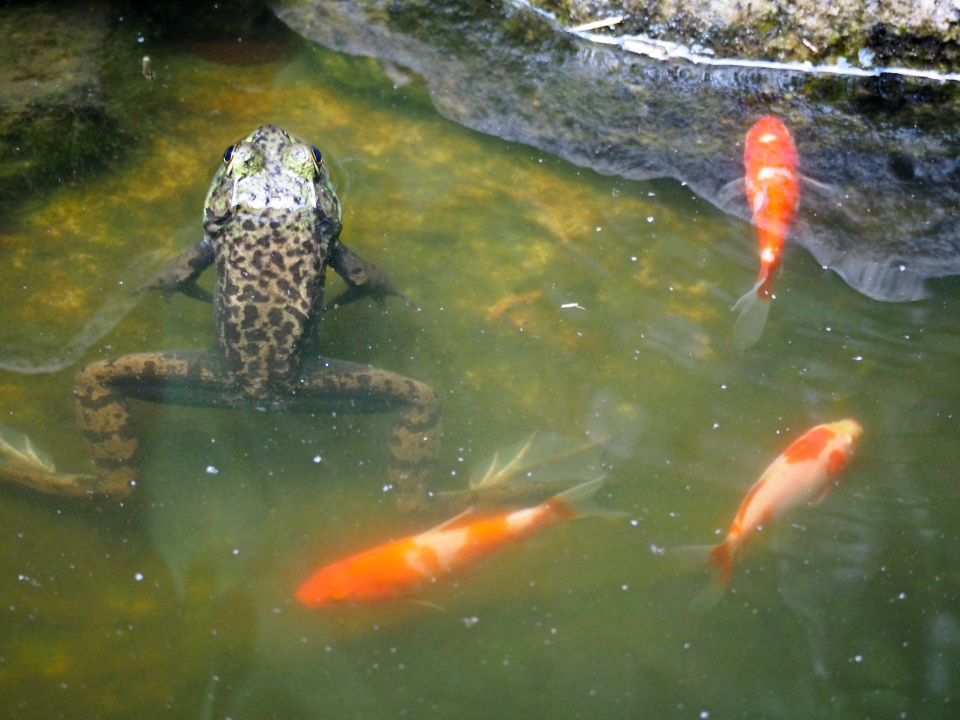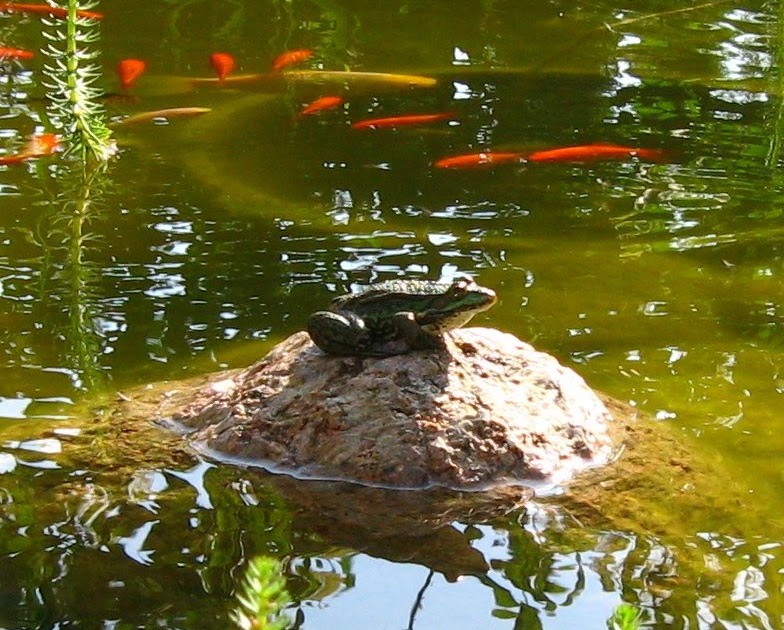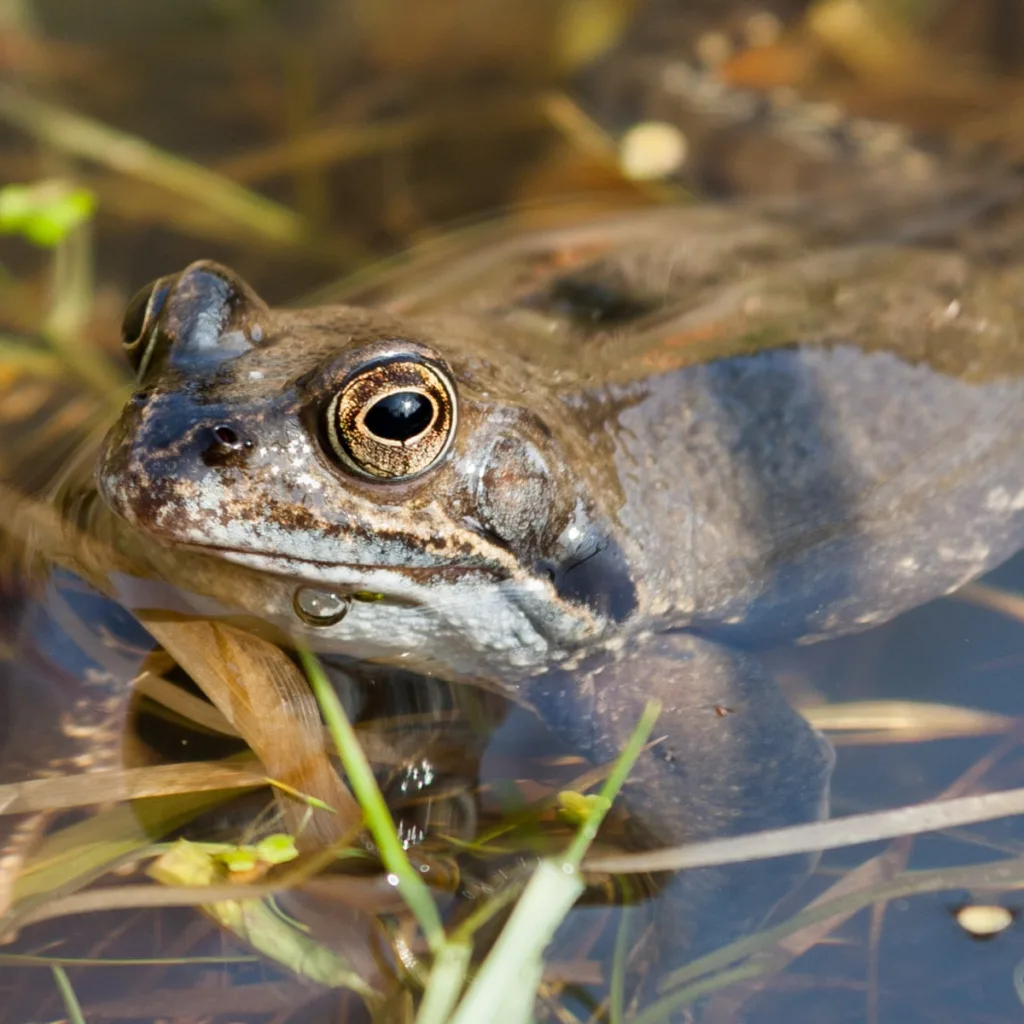Welcome to our blog post aout the age-old question – do frogs eat fish? If you’re a pond owner or just love spending time by the water, you may have wondered about the relationship between frogs and fish. In this post, we’ll dive into the topic and provide you with all the information you need to know.
Firstly, let’s start with the basics. Yes, frogs can eat fish if they are small enough to fit in their mouth. However, this does not happen very often as frogs typically prefer to target insects as their primary food source.
That being said, if fish are readily available and the frog is hungry, they may decide to go for a fish instead. It’s important to note that this usually occurs with smaller fish, as larger fish are more likely to prey on the frog instead.
So, if you’re worried about your fish being eaten by frogs, don’t be too concerned. Frogs will only eat fish if they’re small enough to fit in their mouth, and even then, it’s not a common occurrence.
In fact, frogs and fish can coexist peacefully in a pond as long as they’re around the same size. For example, a frog anywhere from 3” – 8” will live with mature goldfish just fine in a pond. This balance is important in creating a diverse ecosystem that supports a range of species, from fish and frogs to plants and insects.
But what do frogs eat if they’re not targeting fish? Adult frogs primarily eat insects that they catch with their long, sticky tongue. They may also consume other invertebrates such as snails, slugs, and worms.
While frogs can eat fish, it’s not a common occurrence and shouldn’t be a cause for concern for pond owners. Instead, focus on creating a balanced ecosystem that supports a range of species, including frogs and fish. And the next time you spot a frog in your pond, you can appreciate it for more than just its pretty face and voice – it’s an important part of your pond’s ecosystem.
Do Frogs Eat Fish?
Yes, frogs are known to eat fish. However, they typically target smaller fish that can fit in their mouth. Frogs are more commonly known to feed on insects, but they may hunt fish when they are readily available. It’s important to note that while frogs may eat fish, they themselves are a common prey for larger fish.

Can Frogs and Fish Coexist?
Yes, frogs and fish can live together peacefully under certain circumstances. The key to ensuring that they get along is to make sure that the size of both the frogs and the fish are compatible. If the fish are of a good size and the frog is too large to be eaten by the fish, but too small to eat the fish, then there is a good chance that they will coexist harmoniously. Generally, frogs and fish of similar sizes will live together without any issues. For instance, a frog that is between 3 and 8 inches in length will be able to live with mature goldfish just fine in a pond. However, it’s essential to note that not all types of frogs and fish can live together. Some species may be aggressive towards one another, or teir living requirements may be different, which could lead to conflicts or stress. Therefore, it’s crucial to research and carefully select the species that you want to keep together and ensure that their needs are compatible.
The Benefits of Keeping Frogs in Fish Ponds
Yes, frogs are beneficial for fish ponds as they play an important role in maintaining the balance of the ecosystem. Frogs feed on insects, worms, and oter small organisms that can be harmful to the fish and the plants in the pond. They also help to control the population of mosquitoes, which can spread diseases to both humans and fish.
Moreover, the presence of frogs in the pond indicates that the water quality is good and the environment is healthy. Frogs are sensitive to changes in their surroundings, and their presence is a good indicator of the overall health of the pond.
Frogs also contribute to the biodiversity of the pond, and their presence can attract other wildlife such as birds and snakes. They add to the natural beauty of the pond by their unique appearance and their soothing croaks.
In summary, frogs are highly beneficial for fish ponds as they help to maintain the ecological balance, control the population of harmful organisms, indicate good water quality, contribute to biodiversity, and enhance the overall beauty of the pond.
What Do Frogs Eat?
Frogs are carnivorous creatures that primarily feed on insects, such as crickets, flies, moths, and grasshoppers. They use teir long, sticky tongue to catch their prey, which they then swallow whole. In addition to insects, frogs also consume other small invertebrates, such as snails, slugs, and worms. Some larger species of frogs may even eat small vertebrates, such as mice and other small rodents. It’s important to note that the diet of a frog varies depending on their species, age, and habitat. However, regardless of their diet, frogs play a crucial role in maintaining the balance of ecosystems, as they help control the populations of insects and other small animals.
What Foods Should Frogs Avoid?
Frogs are strictly carnivorous, which means they only eat meat and insects. Therefore, it is not recommended to feed them fruits or vegetables as they are not a part of their natural diet. Feeding them anything other than meat or insects can cause impaction in their digestive system, which can lead to srious health issues. Additionally, it is important to avoid feeding them food that is too large or too hard to digest, as this can also cause blockages in their digestive system. It is crucial to provide a balanced and appropriate diet for your pet frog to ensure they stay healthy and happy.

Do Green Frogs Consume Fish?
Yes, green frogs are known to eat fish. While they primarily feed on insects, they have been observed consuming small fish as well. This is especially true for juvenile green frogs, as they have a more varied diet compared to adult frogs. However, fish are not a staple food for green frogs and they mostly rely on insects and other small invertebrates for their nutrition.
Exploring the Reasons Behind Frogs Hugging
Frogs engage in a mating hug called amplexus, which is essential for the fertilization of eggs. During amplexus, the male holds the female around the waist and fertilizes the eggs as she lays them. This behavior is necessary for the continuation of the species and is observed in almost all frog species. Amplexus can last for several hours or even days, depending on the species, and is crucial for the proper fertilization of the eggs. Therefore, frogs hug for mating purposes and to ensure the survival of their offspring.
The Significance of Having Many Frogs in the Yard
When you have a lot of frogs in your yard, it could indiate that there is an abundance of insects or moisture in the area, as frogs require ample food and water to survive. This could also suggest that there is a healthy ecosystem in your yard, as frogs are an important part of the food chain and can help control insect populations. However, it is important to note that some species of frogs can be poisonous to pets, so caution should be taken if you have dogs or cats that roam your yard. Additionally, the presence of frogs can also attract predators, such as snakes, who prey on them. Therefore, while having frogs in your yard can be a sign of a thriving ecosystem, it is important to be aware of potential risks and take necessary precautions.
Mating Habits of Frogs
Frogs mate with other frogs of the same species. This is because each frog species has its own unique mating call and behavior, which is recognized only by members of that same species. During mating season, male frogs produce distinctive calls to attract female frogs. Once a male and female frog have found each other, the male grasps the female aroud the torso with his forelimbs and fertilizes the eggs as they emerge. Depending on species, mating pairs can remain clasped together for hours, days, even months. It’s important to note that different species of frogs have different mating behaviors and rituals, but all frogs mate with other frogs of the same species.

The Benefits of Removing Frogs From Ponds
As a protected species, it is not recommended to remove frogs from their natural habitat, whih includes their pond. Frogs play an important role in the ecosystem as they help to control insect populations and serve as a food source for other animals. Additionally, removing frogs from their pond can disrupt their natural breeding cycle and overall population. Furthermore, it is important to note that removing frog spawn or tadpoles from their pond is also not recommended as they require as much plant leaf cover as possible to hide from predators. Therefore, it is best to leave frogs and their spawn in their natural habitat and observe them from a safe distance.
How Long Will a Frog Live in a Pond?
The length of time that a frog will stay in your pond largely depends on the species of frog and their breeding habits. In the case of Common Frogs and Common Toads, the majority of breeding individuals will not stay around the pond area for more than a few weeks. Male amphibians typically arrive earlier than females, and there can be a few weeks before breeding actually commences. Once breeding is complete, the males and females will move on to other areas to forage and find shelter. It is important to note that some species of frogs, such as the Bullfrog, may stay in the pond for longer periods of time. Additionally, if your pond prvides ample food and shelter, you may see a greater number of frogs staying for extended periods. Ultimately, the length of time that a frog will stay in your pond will depend on several factors, including species, breeding habits, and availability of resources.
The Disappearance of Frogs From My Pond
Frogs leave ponds for several reasons. During the mating season, they come to the pond to breed and lay eggs. Once the eggs hatch, tadpoles emerge and undergo metamorphosis. As they grow, they need more space and nutrients, which may be scarce in the pond. Therefore, they leave the pond in search of larger bodies of water with more abundant food sources. Additionally, leaving the pond reduces competition for resources and minimizes the risk of predation. Therefore, it is a natural behavior for frogs to leave the pond after they have fully developed.
Frogs’ Favorite Food
Frogs, bing carnivorous animals, have a diverse diet that mainly comprises insects such as flies and moths, as well as snails, slugs, and worms. Their long tongues and sticky saliva are their primary tools in catching prey that passes them by. These amphibians are also known to feed on small fish, spiders, and even other frogs. However, the specific favorite food of a frog may vary depending on its species, size, and location. For instance, some larger species of frogs may prey on mice and birds, while others may consume small reptiles and mammals. Nonetheless, insects are a staple food for most frogs, and they rely on them heavily for their survival.

Do Frogs Eat Meat?
Yes, frogs are carnivorous animals and they do eat meat. Their diet depends on their size, but generally, small to medium-sized frogs eat insects such as flies, mosquitoes, moths, and dragonflies. Larger frogs will eat larger insects like grasshoppers and worms. Some large frogs are known to eat small snakes, mice, baby turtles, and even other smaller frogs. Therefore, it can be concluded that frogs do eat meat as a part of their diet.
The Impact of Feeding Meat to Frogs
It is not recommended to feed frogs meat as it is not a part of their natural diet. Frogs are primarily insectivores and feed on a variety of small insects, worms, and other invertebrates. While some larger species of frogs may occasionally consume small fish or other amphibians, it is not a common part of their diet.
Feeding frogs meat can lead to nutritional deficiencies and health problems. It is important to provide them with a balanced and varied diet that meets their specific nutritional needs. If you are unsure about what to feed your pet frog, it is recommended to consult with a veterinarian or an experienced amphibian keeper for advice.
Conclusion
In conclusion, frogs have been known to eat small fish, but it is not a common occurrence. They typically target insects as their primary food source, along with oher invertebrates such as snails, slugs, and worms. If a frog does consume fish, it is usually because they are readily available and small enough to fit in their mouth. However, when living in harmony with fish of similar size, frogs can coexist peacefully and contribute to the diversity of species in a pond. Overall, while frogs may not be major predators of fish, they play an important role in maintaining a balanced ecosystem and should be appreciated for their unique contributions.
